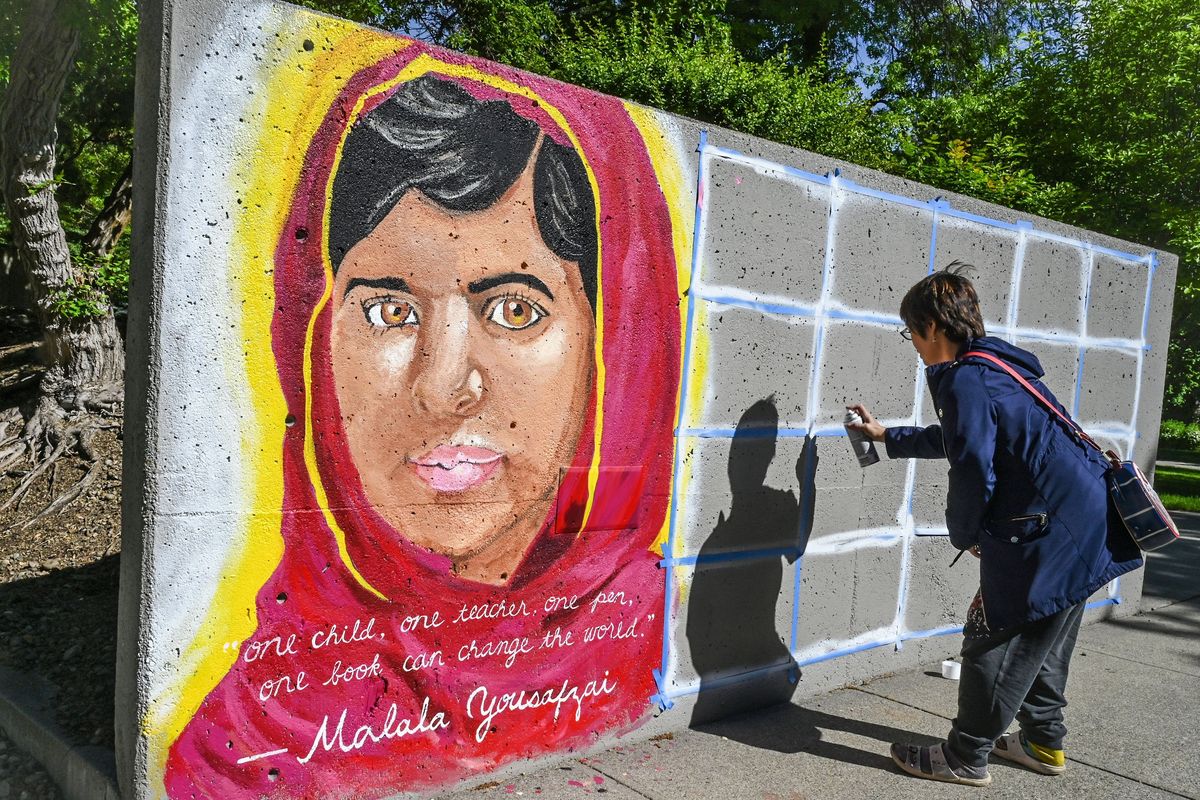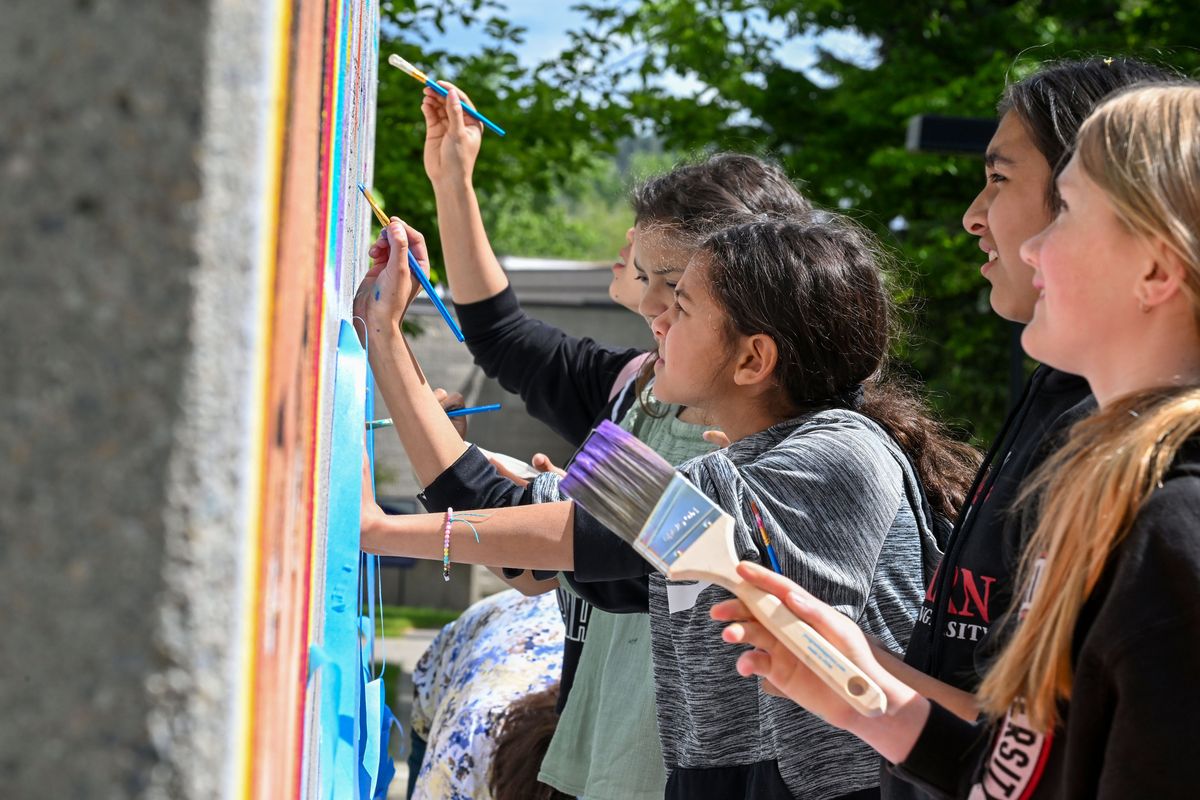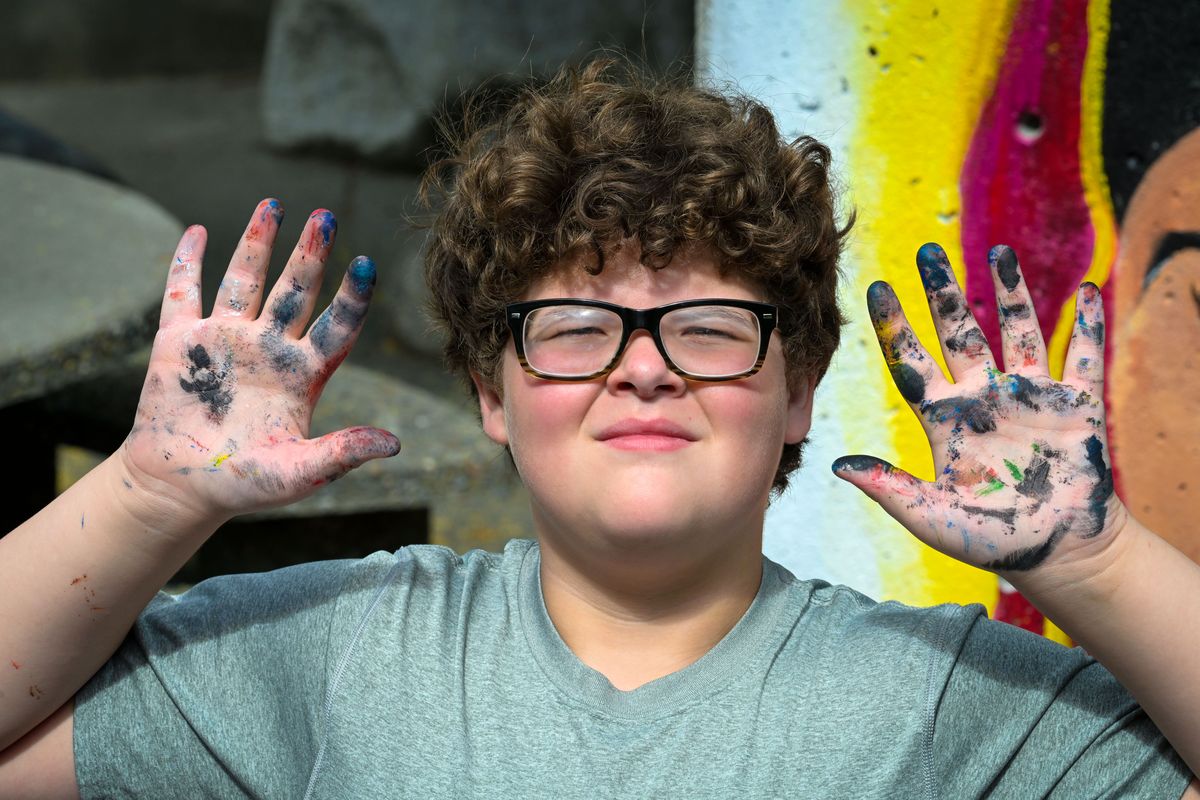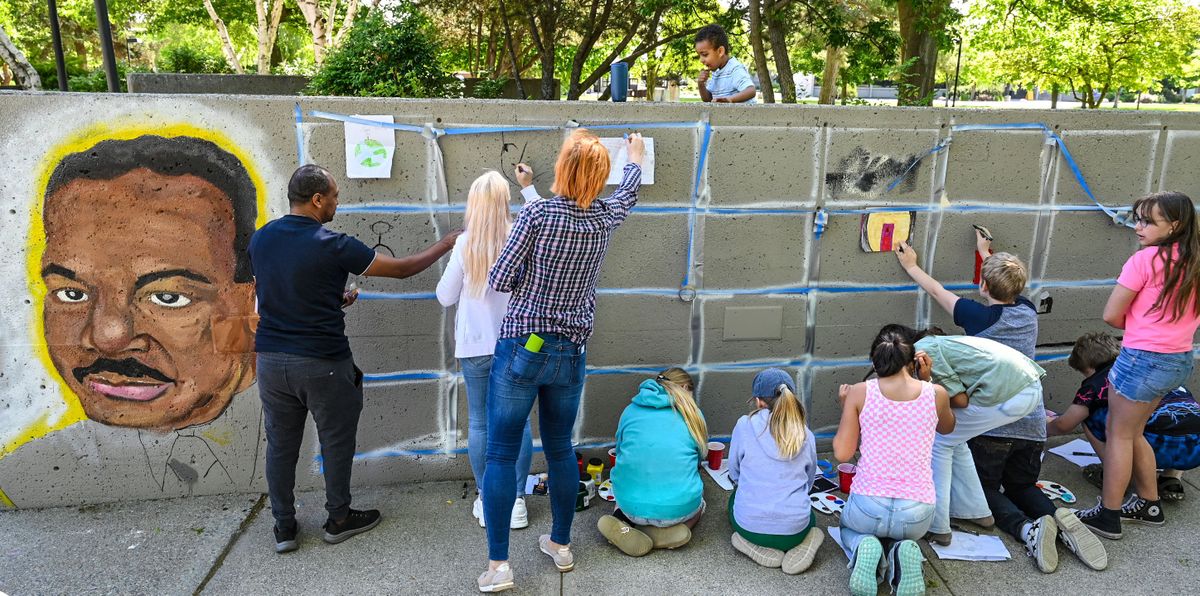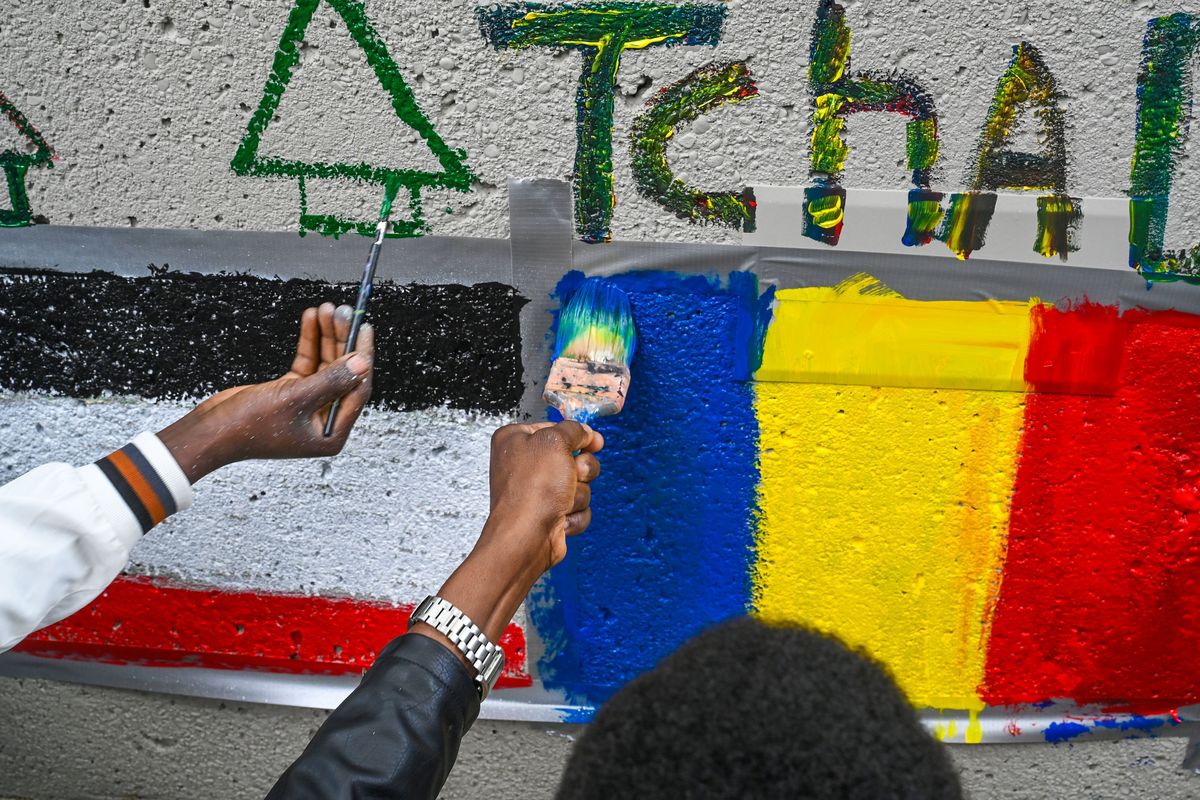Students paint images on SCC campus inspired by historical figures community work
After painting portraits of historical figures, like Malala Yousafzai, Adams Elementary School ELD teacher and artist Ayuko Momono prepares spaces for students to paint their own creations on the SCC Central Plaza as part of the Transcending Time and Love project on Wednesday in Spokane. (DAN PELLE/THE SPOKESMAN-REVIEW)
When Christina Mitma stepped into her position as Spokane Community College English as a Second Language instructor three years ago, the first thing she noticed were the empty walls.
With the help of former Gonzaga University colleague Ayuko Momono, fifth-grade students were given the opportunity to paint and draw on the walls with murals of eight historical figures throughout the area.
“I want to create and make inclusive and safe spaces for people,” Monomo said. “This is a good opportunity for all of us to make art. I believe art can bring people together.”
By the time the students got to the campus, Momono had already painted each of the eight figures on separate walls after working on them for the past month. Individual squares were on the wall as well, allowing students to paint next to the historical figure of their choice for the Transcending Time and Love project.
The eight historical figures include the following:
- Martin Luther King Jr. – activist and Civil Rights Movement leader.
- Sandy Williams – Spokane civil rights activist.
- Malala Yousafzai – Pakistani female education activist who received a Nobel Peace Prize at 14.
- Helen Keller – disability rights activist and political rights activist.
- Margo Hill – Spokane Tribal Leader and Eastern Washington University professor.
- Albert Einstein – theoretical physicist.
- Yoko Ono – Japanese artist and peace activist.
- Cesar Chavez – American Civil Rights Activist.
Adams Elementary student Hope Harrison painted her individual square next to Margo’s mural, which included an image of people cleaning the Spokane River.
Hope said she decided to paint this specific image because she believes the water is not as clean as it used to be, and she thinks people need to work to make it cleaner.
Myla Gwinn, another Adams Elementary student, drew an image in her square next to Yousafzai’s image. She created an image depicting herself evolving from a poor speller at the beginning of the school year to a spelling champion at the end.
“I chose Malala because she is inspiring and because I like education too,” Myla said.
Monomo, now a faculty member with Adams Elementary School, said she and Mitma are both on equity teams at their respective schools and wanted to represent historical figures from different generations who made an impact on equity issues in and outside of the community.
Mitma said when she started working for the college three years ago, she created a vision to promote inclusivity and wanted to create a community space with inspirational leaders who represent brilliance throughout multiple generations. By including leaders from different generations, Mitma hopes people can think about how to create a bridge between those generations and come together as a community.
While Margo Hill could not attend the painting session herself, her son, Craig Hill, went to the campus in her place. When Craig Hill asked children whether they knew about the work his mom did for the community, he expected them to say no, so he was shocked when they said yes.
“A lot of her work is about spreading information, not just about Native Americans, but also for the city and river,” he said.
Craig, whose name is Čt’apsqéʔ in Salish (pronounced ch-tap-skeh), said it is important for people, including the children painting murals, to learn how to actively be involved with the community.
“I’m glad that kids have the opportunity to learn about my mom and other important people,” he said. “She is proud to be part of the city’s community and change it for the better.”
Editor’s note: This story was changed on May 30, 2024 to correct the last name of Adams Elementary fifth grader Hope Harrison.
Adams Elementary School students and Spokane Community College International students paint defined squares near an image of Dr. Martin Luther Kin, Jr., in SCC Central Plaza as part of the Transcending Time and Love project, Wednesday, May 29, 2024, in Spokane. The students learned about eight diverse individuals who made a difference through peaceful actions. (DAN PELLE/THE SPOKESMAN-REVIEW)
